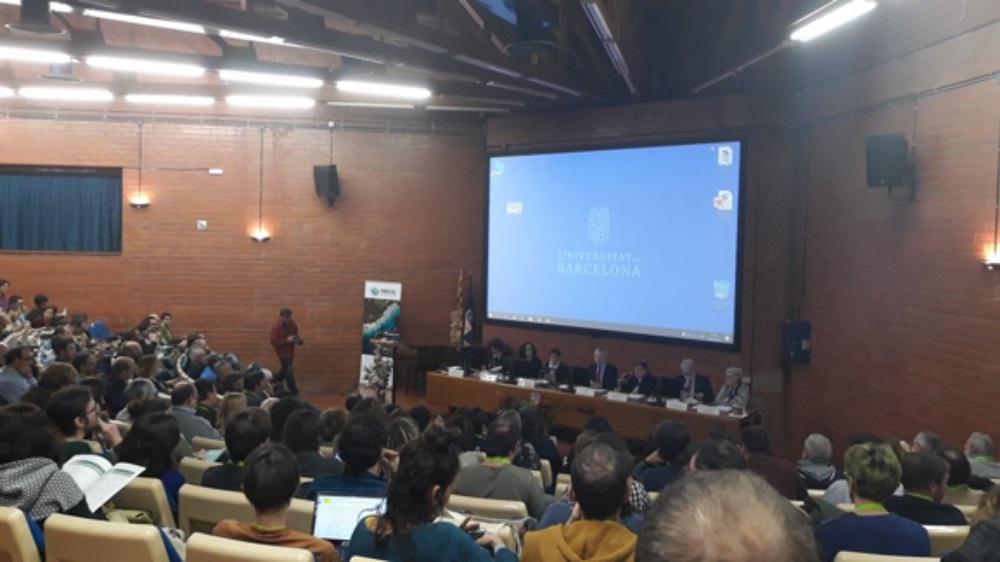A new study reveals that most of the scientific community is unaware of gender disparity in the research world
A new study reveals that most of the scientific community is unaware of gender disparity in the research world
A new study reveals that most of the scientific community is unaware of gender disparity in the research world
A research with a multidimensional approach, published in PLOS ONE, with the participation of more than twenty institutions, including UPF, has assessed whether women and men were equally represented, participative and visible at the 1st Congress of the Iberian Society of Ecology (SIBECOL).

A study led by researcher Anna Lupon from the Centre for Advanced Studies in Blanes (CEAB-CSIC) together with other authors linked to more than twenty international research institutions, including Federica Lucati, postdoctoral researcher at the UPF Department of Political and Social Sciences, and published in the journal PLOS ONE has found that most scientists are unaware of the gender disparity in the scientific world.
The paper’s scenario is the 1st Congress of the Iberian Society of Ecology (SIBECOL), held in Barcelona in 2019, where the female representation has been analyzed. Choosing this congress is due to the fact that ecology is one of the scientific disciplines where there is a greater presence of women. More precisely the authors of the study have focused on the role, perception, personal experience and visibility of women scientists at this event.
Among the conclusions of the study we find that men gave the majority of the keynote presentations (67%) and were more participative (68% of the questions)
Among the conclusions of the study we find that men gave the majority of the keynote presentations (67%) and were more participative (68% of the questions). However, the number of questions asked by women increased when the speaker or moderator was a woman.
One of the most troubling findings was that the majority of respondents, including women, did not notice gender disparities in participation during question and answer time. The minority who detected gender disparity were mostly women, who perceived more sexist stereotypes and felt more excluded than men.
Evident and persistent biases
Despite recent policies aimed at reducing inequalities between men and women in science, gender biases are still evident in key aspects of scientific career progression, such as the acquisition of grants or awards, attendance at conferences or appearances in the first or last authorship positions in relevant articles.
These gender imbalances, which according to the authors of the study are alarming in themselves, reduce the visibility of women researchers and can trigger vicious circles of gender bias that explain the persistence of the glass ceiling.
In this sense, conferences and congresses are ideal platforms to study gender gaps in the scientific world, as they are important cultural events that reflect the barriers and obstacles that exist for women in science.
Only 33% of the keynote speakers were women
Although in terms of attendance, authorship and presentations the conference was gender balanced, women scientists were less represented in the most prestigious positions of the conference, such as keynote presentations (33%) or last authorship (29%). In addition, women were in the minority (less than 40%) in both organising and scientific committees.
These results are in line with previous studies showing that, although the field of ecology is generally dominated by women at the student level, women are still under-represented in high-level and prestigious academic positions.
Less participation in Question Time
In the talks analyzed, the proportion of women and men in the audience was similar (40% and 60% respectively) regardless of the speaker’s gender. However, the total number of attendees varied according to the gender of the speaker, being on average 12.3% higher when the speaker was a man than when the speaker was a woman.
Another worrying finding of the study is that women participated less than men in the question-and-answer sessions. Specifically, of all the talks that received questions, only 37% of the time woman ask the first question.
On the other hand, women and men asked a similar number of questions when the speaker/moderator was a woman, while men asked more questions when the speaker/moderator was a man, results which show that it is important to have women in visible or prestigious positions in order to increase women's sense of belonging in science.
Towards more inclusive scientific conferences
However, the results of the study highlight the importance of moving towards greater inclusion of women, as this "invisibility" can affect their well-being and motivation to pursue a career in science. Moreover, as the authors of the study stress, "it can compromise the overall quality of academia, which benefits from the integration of different perspectives". They are therefore committed to further assessing the factors that hinder women's success in science in order to ensure an equitable future in scientific disciplines.
"This multidimensional approach to the study is fundamental to provide a comprehensive assessment of the situation of women in science and to develop evidence-based policy making to promote inclusive scientific conferences," explains Anna Lupon, researcher at CEAB-CSIC.
Article reference: Lupon A, Rodríguez-Lozano P, Bartrons M, Anadon-Rosell A, Batalla M, Bernal S, et al. (2021) Towards women-inclusive ecology: Representation, behavior, and perception of women at an international conference. PLOS ONE 16(12): e0260163.
https://doi.org/10.1371/journal.pone.0260163
